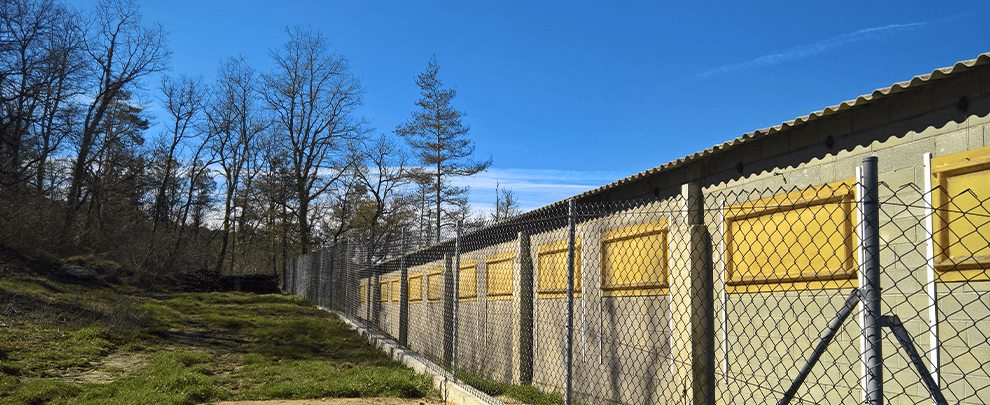Blog
Blog

Biosecurity measures to face health threats
21st November 2019 - Studies
Carlos Sánchez. Veterinarian of the Animal Health Prevention Service of the Generalitat de Catalunya
The Spanish pig farming sector is probably one of the most relevant in the national and international market, due to the quality and variety of its products, and the important benefits it brings. The sector contributes to maintaining an economic and productive network that is distributed throughout the entire territory and offsets the demographic and industrial concentration around heavily populated areas in Spain. Nonetheless, pig farming must face different threats and challenges.
Currently, the main threat is related to health: there are many diseases that affect or could affect the pig farming sector. Firstly, those characterised by their enormous virulence and power of contagion. These are diseases that must be notified and, in the case of a focus being confirmed, they would have a serious effect on our trade, as they would lead to the closing of borders for the export of pork products. Some examples are African swine fever (AFS), classic swine fever (CSF) and foot and mouth disease.
Secondly, Aujeszky's disease and salmonellosis. The first has caused serious harm to the sector and some isolated cases are still being reported on farms. Salmonellosis is important, as it is a zoonotic disease that persists during the different phases of the food chain, and may affect consumers.
Lastly, there is another group of diseases that are equally important, formed by all those that do not entail the blocking of exports and have no repercussions on the health of people, but which, when present on farms, causes important financial losses, mainly due to factors such as piglet mortality, a reduction in the feed conversion ratio, leading to the need for more food and time to reach the desired weight, an increase in veterinary and medicine costs, an increase in cleaning and disinfecting operations and in the period of inactivity of the farm until an optimum state of health is reached, and the replacement of animals.
This group includes diseases that are known and suffered by our livestock farmers, such as the following:
|
Bacterial diseases |
Viral diseases |
|
|
Apart from health threats, the sector must also face other challenges:
- Social and media influence on any productive activity that includes animals and affects the environment. This context means the sector must make great efforts to ensure clear, transparent communication to the rest of society about certain aspects of the production process regarding quality porcine production.
- The other important challenge facing the pig farming sector is the reduction in the use of antibiotics in animal production. This problem not only affects livestock: the creation of bacteria that are resistant to antibiotics means that it is becoming more and more difficult to find effective antibiotics to prevent bacterial infections that may affect both humans and animals. In recent years, Spain has made a considerable effort to reduce the use of antibiotics in animal production, but we are still one of the European countries with the highest level of antibiotic consumption.
Due to their awareness of these challenges and threats, stockbreeders must reflect and then take action to prevent or reduce the risk of all these diseases that pose a threat to the sector entering their farms. For this reason it is essential to establish good biosecurity measures.
The farm exterior (apart from the fencing around the perimeter) is an area that is not controlled by the farmer: we do not know the extent of the microbial and/or parasite load that may exist or the routes travelled by people, vehicles and/or objects that are about to enter. On the other hand, the farm is an area controlled by the farmer, and for this reason it is the place where action must be taken by implementing measures to prevent the entry of those diseases from the exterior. All the above measures, whether structural or management-based, are known as biosecurity measures.
Each farm has its own peculiarities, and each stockbreeder knows the critical points of their farm, the points in which there is a risk of diseases entering and the solutions to apply to eliminate these weak points.
Most micro-organisms that cause porcine diseases need other elements, living or dead, to help them enter the farm; these are known as vectors. On livestock farms, the main routes of entry for diseases and the measures that can prevent or reduce their entry are:
|
Entry route |
Biosecurity measures |
|
People. |
|
|
Vehicles. |
|
|
New animals. |
|
|
Birds, rodents and other animals. |
|
|
Objects, utensils. |
|
|
Water. |
|
We can thus establish a direct relationship between the increase in biosecurity levels and the reduction in health problems on farms. One biosecurity measure prevents and stops the entry of different pathogens, whether viral, parasitic or bacterial, and therefore prevent the use of antibiotics. We should thus consider that biosecurity actions on livestock farms are broad-spectrum measures and, if you will permit me to say so, do not generate resistance.






